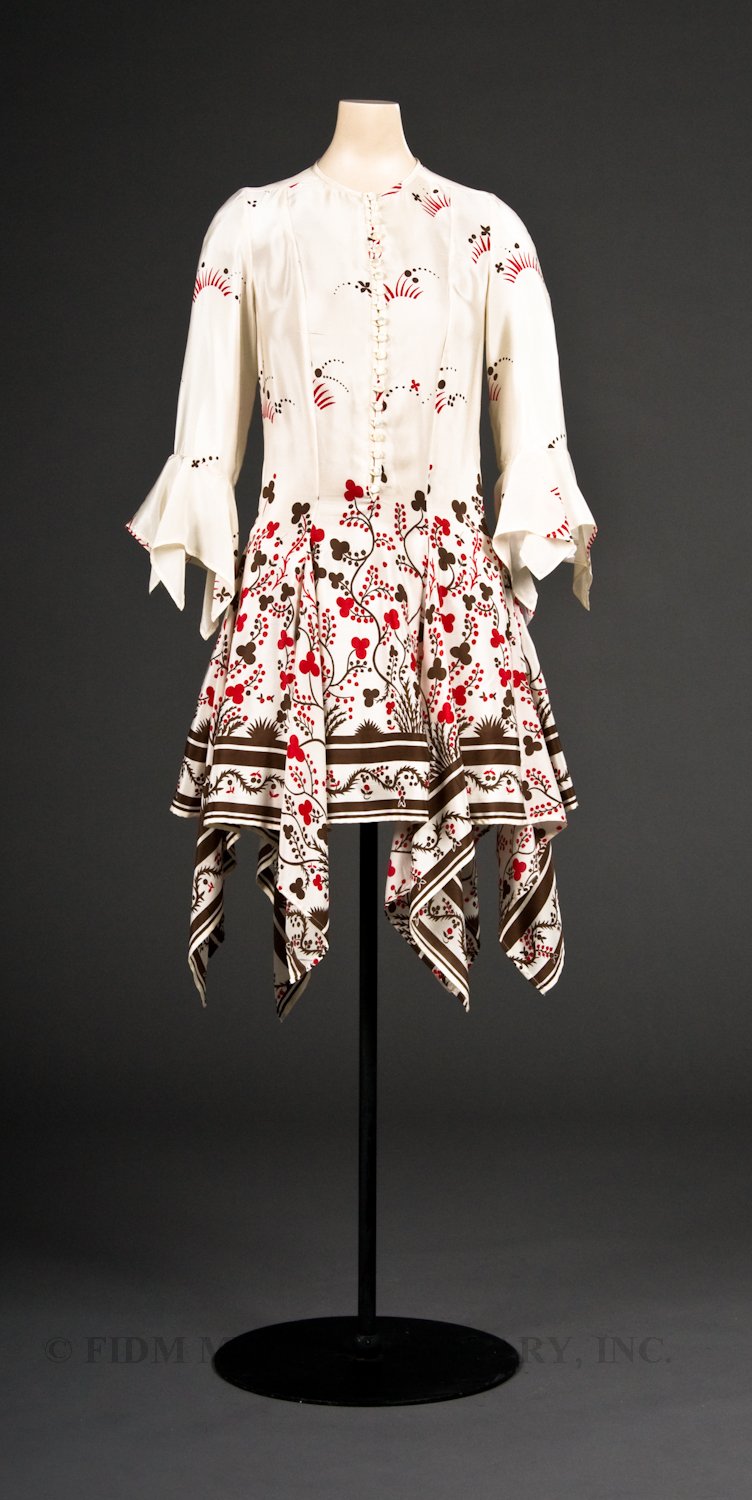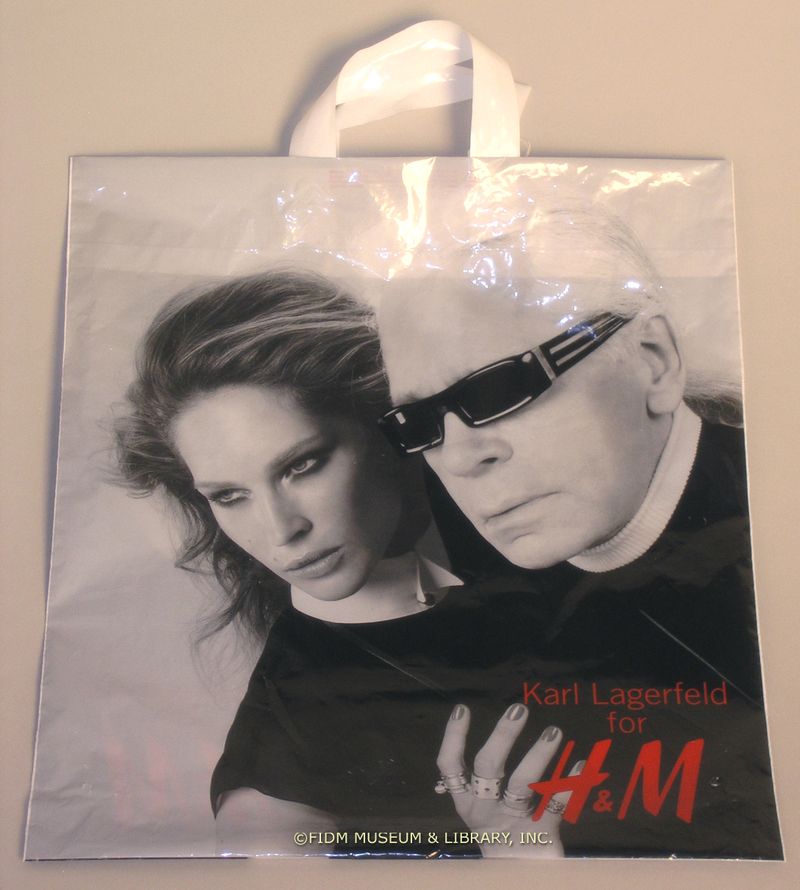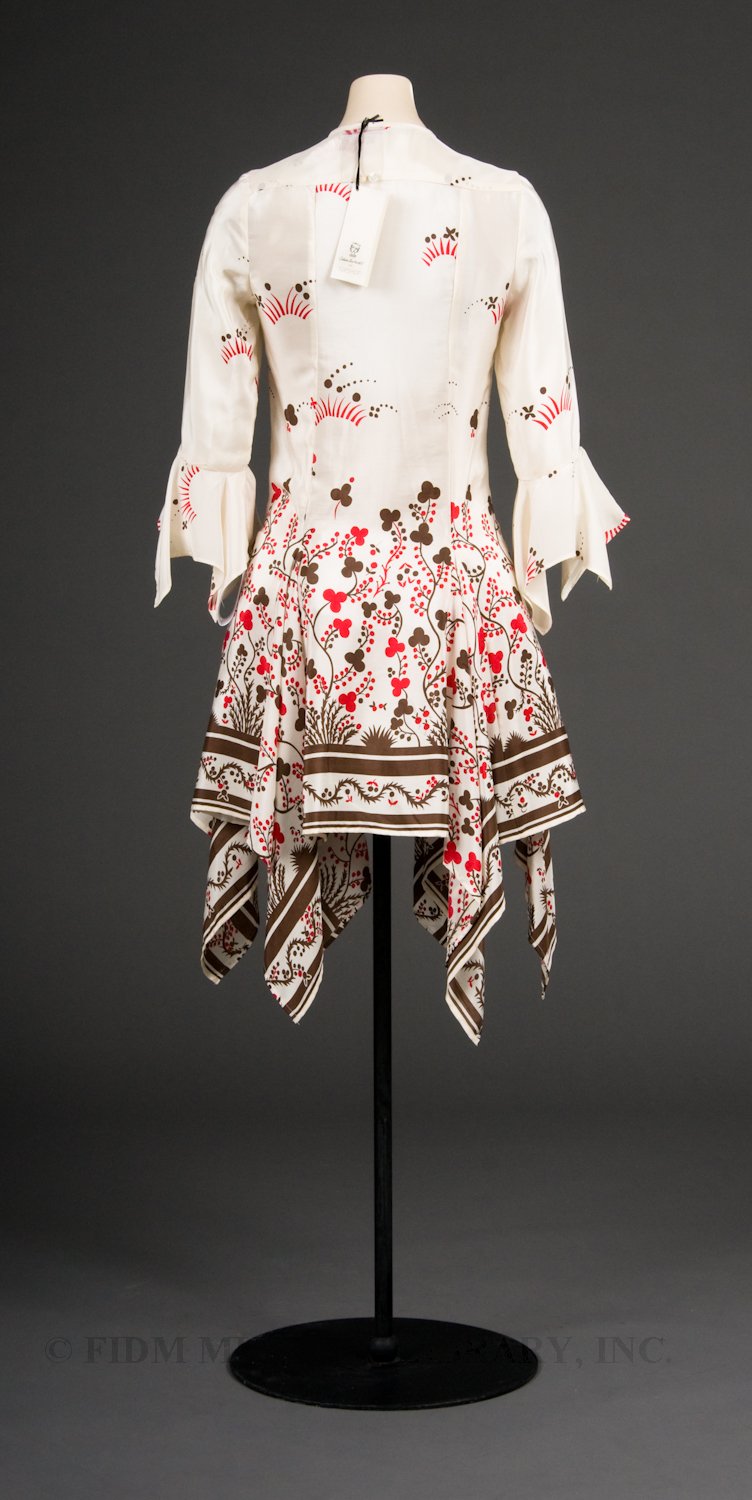Over the last few years, collaborations between clothing designers and mass-market retailers have become increasingly common. These fast fashion or capsule collections consist of a small group of designer items created for a specific retailer and are only available for a limited time. Capsule collections allow the average consumer to purchase a designer item at significant savings while allowing mass-market chains to increase their profile through targeted marketing campaigns. For new or unestablished designers, capsule collections help spread their name and design aesthetic, while well-known designers are able to bring their designs to a wider audience. Though these collaborations are now commonplace, one of the very first high/low collaborations was between Karl Lagerfeld and H&M, which launched in November 2004.
As the first such collaboration, Lagerfeld’s capsule collection received a tremendous amount of attention from both consumers and the press. Carried in roughly half of the H&M stores, customers lined up for hours before stores opened in order to purchase one of the Lagerfeld designed items. The collection sold out within hours at many H&M stores and there were reports of customers actually grabbing garments out of the hands of sales clerks. The FIDM Museum black silk cocktail dress seen below is one of Lagerfeld’s designs for H&M.

Cocktail dress
Karl Lagerfeld for H&M
Fall 2004
Museum Purchase
2004.5.47A-C
As you can see from the tag attached to the dress and from the image of Lagerfeld on the bag below, marketing for capsule collections relies almost entirely on the stature of the designer.
In 2006, the UK based retailer Topshop launched a collaboration with textile designer Celia Birtwell. Unlike Lagerfeld, who is widely known as both a personality and a designer, Birtwell’s work and name had been largely forgotten for many years. Active during the 1960s and 70s, Birtwell’s textile designs juxtaposed floral and geometric forms and were used by her husband, designer Ossie Clark. The Topshop collaboration led to a fast fashion collection for the American retailer Express and probably influenced the decision to briefly relaunch the Ossie Clark label in 2008-2009.
The Celia Birtwell for Topshop dress seen below features the Monkey Puzzle print, originally created by Birtwell and used by Ossie Clark. The cut of the dress itself is nearly identical to a Clark dress created during the late 1960s. A two-piece trouser ensemble in the Monkey Puzzle print was chosen as the UK Dress of the Year in 1969.

Daydress
Celia Birtwell for Topshop
Spring 2006
Museum Purchase
2006.5.9
Though capsule collections have been a popular marketing tool for the last few years, the excitement associated with capsule collections has diminished greatly. These collaborations have become so commonplace that new capsule collections receive relatively little attention. Widespread availability of consciously designed items certainly democratizes fashion, but does it also cheapen the concept of the designer as artist? Or is fast fashion here to stay, an indicator of widespread interest in the field of design in general and fashion design in particular?





I have a few responses to this!
– Celia Birtwell is probably less ‘forgotten’ in her native country. In the period preceding her first Topshop collection, there had been numerous references to her and Ossie Clark’s work in popular fashion magazines since many fashion designers were taking inspiration from their work at that time, serving to introduce them to a younger audience, and remind older fashion enthusiasts about them. So Topshop were very shrewd to seize their chance and capitalise on that heightened awareness of them/her.
– These capsule designer collections are not evenly distributed across all the chain store branches! I found this out to my cost when queuing up, on behalf of the museum I volunteer at, to get a specific outfit from the Commes des Garcons/H&M collection. Most of the garments that were billed online before the launch as being stocked in the Manchester (UK) branch (i.e. some of the most interesting ones) were not there! Its a deliberate policy to restrict the ‘star’ items to one or two London stores to retain some sense of exclusivity. The same thing is going on right now with Pierre Hardy’s ‘must have’ shoes this season for Gap. It appears that I can’t add a link to a Guardian article that humorously addresses this subject . . .
– Of course there’s a trade-off. You might be getting a high-end designer’s input, but the actual product is often disappointingly shoddy. I have a blouse from the Celia Birtwell range for Topshop with the same print as your dress, and its really badly made. The collars are uneven and the fabric is cheap looking. I suppose this is to be expected, but it makes you wonder why the designer bestowing their name to the line would approve the samples they must have inspected.
– Related to the last point. Is this really democratisation of high-end fashion? You might be able to buy a cheap approximation of an elite and/or cult designer’s style if you’re lucky (see my second point!) but it will look and feel like a crappy pirated version from Thailand. Is this really allowing access to elite fashions for the masses, or a marketing exercise bestowing prestige, glamour and extensive media coverage on cheap clothing retailers?
– Lastly, I must add an optimistic note. I invested in a grey suede jacket from the Barbara Hulanicki/Topshop range that came out this summer (2009) – and was possibly the most expensive item in that range – and its currently my favourite jacket!
Sarah, thanks so much for your comments!
I especially appreciate your reminder about Celia Birtwell’s popularity in her native country. It’s a great reminder that even thought stores like H&M and Topshop are worldwide, there are still some localized aspects of fashion and taste.
In response to your comment about quality vs. accessibility, I think that both are true. To get a designer garment at a low price, you’re probably going to sacrifice some quality. It’s a trade-off to obtain a portion of the status associated with designer names. For the most part, consumers seem okay with this.
It also raises the question of whether or not the consumer can purchase a well-designed, well-made item at a reasonable price. Is this part of the reason that home-sewing has become (re)newly popular?
Now a days peoples are exporting fashion to other parts of the world.
I love Celia Birtwell’s prints. If you ever have problems finding particular pieces that arent stocked at specific branches, you could always check out ebay. Its surprising how much hight street stuff appears on there very quickly after launches.
I stll have this silk taffeta dress; it’s gorgeous and classic. I wear it to cocktail parties and the opera. It’s so Grace Kellyesque!
I still love my black silk karl lagerfeld cocktail dress. I wore it for my 40th and 50th birthday in 2013 and recently wore it to a Masquerade ball Nov 2014.
It’s a classic dress!!! And has lasted well.